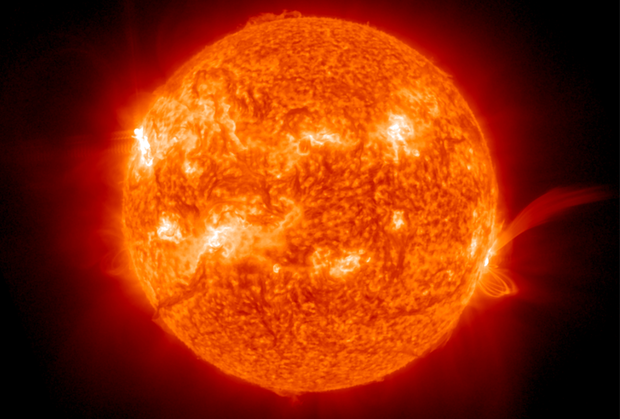New research indicates that the Sun’s magnetic field originates much closer to the surface than previously thought, a discovery that could help predict periods of extreme solar storms like those that hit the Earth earlier this month.
The magnetic field appears to generate 20,000 miles below the surface of the Sun. Previous calculations have placed the roots of this process more than 130,000 miles below, an international team reported Wednesday.
The Sun’s intense magnetic energy is the source of solar flares and plasma eruptions known as coronal mass ejections. When directed towards Earth, they can create dazzling auroras but also disrupt power and communications.
“We do not yet understand the Sun well enough to make accurate predictions” of space weather, lead author Geoffrey Vasil of the University of Edinburgh said in an email.
The latest discoveries published in the journal Nature “It will be an important step toward finally resolving” this mysterious process known as the solar dynamo, added co-author Daniel Lecoanet of Northwestern University.
/AP
Galileo was one of the first astronomers to turn a telescope skyward and study sunspots, in the early 17th century. Solar flares and coronal mass ejections tend to occur near sunspots, dark spots as large as Earth that are located near the most intense portions of the Sun’s changing magnetic field.
Vasil and his team developed new models of the interaction between the Sun’s magnetic field and plasma flow, which varies at different latitudes during an 11-year cycle. They fed their calculations into a NASA supercomputer in Northern California – the same one used in the 2015 film “The Martian” to check the best flight path to rescue the main character. The results suggested a shallow magnetic field and further research is needed to confirm this.
The modeling was “highly simplified,” Ellen Zweibel of the University of Wisconsin-Madison, who was not part of the team, said in a statement. accompanying editorial.
The results are intriguing and “will certainly inspire future studies,” Zweibel said.
Preparing for “potentially much more dangerous” storm
The new knowledge should improve long-term solar predictions, allowing scientists to better predict the strength of our star’s future cycles. The Sun is approaching its maximum level of activity in the current 11-year cycle, hence the recent crises.
Strong solar flares and explosions of billions of tons of plasma earlier this month triggered strong solar storms that produced auroras in unexpected places. Last week the sun expelled biggest solar flare in almost 20 yearsbut avoided Earth.
NOAA Space Weather Prediction Center
This happened just days after an “extreme” G5 geomagnetic storm hit Earth, after NOAA’s Space Weather Prediction Center warned of the potential for a severe impact.
A better understanding of the Sun can ensure that “we are prepared for when the next storm – potentially much more dangerous – hits Earth,” Lecoanet said.
Earth is currently in Solar Cycle 25, which began in 2020. The last cycle maintained an average length of 11 years and was the weakest solar cycle to occur in a century, the National Weather Service said. Although the current cycle is predicted to be quite weak and similar to the previous one, NOAA officials have seen “a steady increase in sunspot activity” since the beginning.
Li Cohen contributed to this report.
























